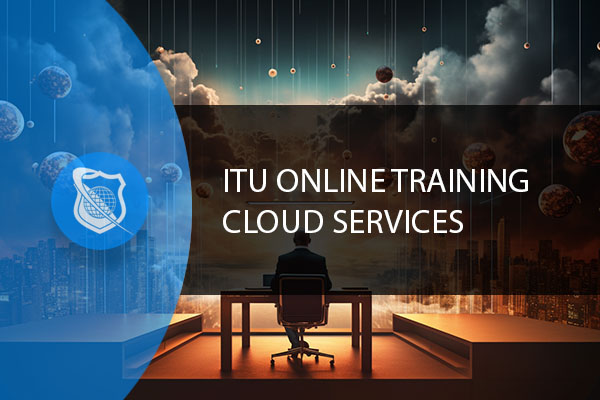Hypervisors, also known as Virtual Machine Monitors (VMMs), are a fascinating piece of technology that allows multiple operating systems to share a single hardware host. This technology is the backbone of virtualization and is crucial in cloud computing, enabling efficient resource utilization and system management.
The Role of Hypervisors
Hypervisors provide a layer of abstraction between the hardware and the operating system. They allow multiple ‘guest’ operating systems to run concurrently on a host machine, treating resources like CPU, memory, and storage as a pool that can be dynamically allocated to each guest OS.
Types of Hypervisors
There are two main types of hypervisors, each with its distinct architecture and use cases:
Type 1: Bare Metal Hypervisors
- Definition: These hypervisors run directly on the host’s hardware to control the hardware and manage guest operating systems.
- Key Characteristics:
- Higher performance and efficiency
- Used in enterprise environments
- Examples include VMware ESXi, Microsoft Hyper-V, and Xen.
Type 2: Hosted Hypervisors
- Definition: These hypervisors run on a conventional operating system just like other computer programs.
- Key Characteristics:
- Easier to set up and manage
- Generally slower than Type 1 hypervisors
- Examples include VMware Workstation, Oracle VirtualBox, and Parallels.
Network Administrator Career Path
This comprehensive training series is designed to provide both new and experienced network administrators with a robust skillset enabling you to manager current and networks of the future.
How Hypervisors Work
Hypervisors work by taking requests from the guest operating systems and translating them into the appropriate hardware instructions. This process includes:
- CPU Virtualization: Hypervisors present a virtual CPU to each guest OS and manage the execution of guest OS instructions on the physical CPU.
- Memory Virtualization: Hypervisors manage memory allocation for each guest OS, ensuring that they do not interfere with each other.
- I/O Virtualization: Hypervisors virtualize the input/output operations, allowing multiple guest OSes to share devices like network adapters and storage controllers.
Use Cases of Hypervisors
Hypervisors are widely used in various scenarios, including:
- Server Virtualization: Allowing multiple server instances on a single physical server.
- Desktop Virtualization: Providing individual desktop environments on a single machine.
- Testing and Development: Allowing developers to run and test applications on different operating systems without needing multiple physical machines.
- Cloud Computing: Forming the foundation of cloud services by enabling efficient resource allocation and isolation.

Lock In Our Lowest Price Ever For Only $14.99 Monthly Access
Your career in information technology last for years. Technology changes rapidly. An ITU Online IT Training subscription offers you flexible and affordable IT training. With our IT training at your fingertips, your career opportunities are never ending as you grow your skills.
Plus, start today and get 10 free days with no obligation.
Challenges and Considerations
While hypervisors offer numerous benefits, there are challenges and considerations to keep in mind:
- Security: Ensuring isolation between guest OSes to prevent one compromised system from affecting others.
- Performance Overhead: Managing the additional overhead introduced by virtualization, especially for I/O-intensive applications.
- Resource Allocation: Balancing resource allocation to maximize efficiency without compromising performance.
Which Hypervisor To Use?
The choice of a hypervisor depends on various factors including performance requirements, budget constraints, infrastructure compatibility, and specific use cases. Let’s examine the most well-known server and software virtualizations.
1. VMware vSphere (ESXi)
Pros:
- Mature and Stable: VMware is a leader in the virtualization space with a long track record.
- High Performance: Offers strong performance for enterprise workloads.
- Rich Features: Comprehensive set of features including vMotion, Storage vMotion, and DRS.
Cons:
- Cost: Can be expensive, especially when including the cost of required licenses for advanced features.
- Complexity: The vast array of features can be overwhelming and may require trained professionals to manage.
Ideal Use Case: Best suited for large enterprises requiring a robust, feature-rich environment and those who can afford the investment in licensing and training.
2. Microsoft Hyper-V
Pros:
- Cost-Effective: Comes as a part of Windows Server, making it a cost-effective option for organizations already invested in Microsoft ecosystems.
- Integration with Microsoft Products: Seamless integration with other Microsoft services and products.
- Good Support: Strong support from Microsoft and a vast community.
Cons:
- Windows-Centric: Best features and integrations are mostly available on Windows, which might not be ideal for Linux-centric environments.
- Resource Intensive: Known to be quite resource-intensive, especially in terms of memory usage.
Ideal Use Case: Ideal for small to medium-sized businesses heavily invested in the Microsoft ecosystem and for environments where Windows is the primary operating system.
3. Citrix Hypervisor (formerly XenServer)
Pros:
- Open Source: Offers an open-source version which can be a cost-effective solution.
- Strong Support for Graphics: Good support for virtualized GPU, beneficial for graphics-intensive applications.
- Good Performance: Known for good performance and scalability.
Cons:
- Complex Management: Can be complex to manage, especially at scale.
- Limited Third-Party Integrations: Fewer integrations compared to VMware and Microsoft.
Ideal Use Case: Well-suited for organizations looking for an open-source solution, and those with graphics-intensive virtual workloads.
4. Oracle VM VirtualBox
Pros:
- Free and Open Source: No cost for the basic version, and it’s open-source.
- Cross-Platform: Runs on Windows, Linux, Macintosh, and Solaris hosts.
- Easy to Use: Generally easier to set up and manage compared to other solutions.
Cons:
- Limited Features in Free Version: Some advanced features require a paid license.
- Performance: Not as high-performing as other solutions, especially for production environments.
Ideal Use Case: Best for individual users or small businesses looking for a simple, cost-effective solution for development or test environments.
5. KVM (Kernel-based Virtual Machine)
Pros:
- Open Source and Free: Integrated into Linux, offering a free virtualization solution.
- Performance: Direct access to underlying hardware and support for a broad range of guest operating systems result in good performance.
- Flexibility: Highly customizable due to its open-source nature.
Cons:
- Complexity: Requires more technical expertise to set up and manage.
- Support and Ecosystem: Limited compared to VMware and Microsoft.
Ideal Use Case: Best for organizations with technical expertise that require a customizable, open-source solution and are heavily invested in a Linux environment.
Selecting the right hypervisor involves balancing these pros and cons against your specific requirements and constraints. It’s crucial to thoroughly evaluate your infrastructure, performance needs, budget, and team’s expertise before making a decision.

Get Ahead In Cloud Computing
At ITU, we offer an exclusive Cloud Computing training series designed to prepare you for certification and/or to help you gain knowlege of all Cloud based platforms including AWS, Azure and Gooogle Cloud.
Get access to this exclusive Cloud Computing Training today.
Conclusion
Hypervisors are a cornerstone of virtualization technology. They allow businesses and individuals to optimize hardware usage, reduce costs, and improve scalability and flexibility. As technology evolves, hypervisors will continue to play a pivotal role in the IT infrastructure, driving innovation in cloud computing, virtualization, and beyond.
Frequently Asked Questions Related to Hypervisor
What is the difference between Type 1 and Type 2 hypervisors?
The primary difference lies in their architecture and how they interact with the underlying hardware. Type 1 hypervisors, also known as bare-metal hypervisors, run directly on the host’s hardware to control the hardware and manage guest operating systems. They are known for their efficiency and are commonly used in enterprise environments. On the other hand, Type 2 hypervisors, also known as hosted hypervisors, run on a conventional operating system just like other computer programs. They are easier to set up and manage but generally offer less performance than Type 1 hypervisors.
Can hypervisors ensure complete isolation between virtual machines?
Hypervisors are designed to keep virtual machines isolated from each other. This isolation is crucial for maintaining the security and stability of the system. However, like any software, hypervisors can have vulnerabilities. Ensuring complete isolation also requires proper configuration and regular maintenance, including applying security patches and updates to the hypervisor and guest operating systems.
How do hypervisors impact system performance?
Hypervisors introduce a layer of abstraction between the hardware and the guest operating systems, which can lead to some performance overhead. The impact on performance varies depending on the type of hypervisor, the workload of the virtual machines, and the configuration of the system. Type 1 hypervisors are generally more efficient and offer better performance than Type 2 hypervisors, especially for I/O-intensive applications.
Are open-source hypervisors as reliable as commercial ones?
Open-source hypervisors like KVM and Xen are widely used and can be just as reliable as commercial hypervisors. They are supported by large communities and organizations. The reliability often depends more on the specific use case, workload, and how well the hypervisor is maintained and configured rather than whether it is open-source or commercial.
What role does a hypervisor play in disaster recovery and business continuity?
Hypervisors play a crucial role in disaster recovery and business continuity by providing robust solutions for data protection, system backup, and recovery. With features like live migration, hypervisors allow businesses to move virtual machines from one server to another without downtime, ensuring continuous availability of applications. They also enable quick recovery from hardware failures, as virtual machines can be easily transferred or replicated to other servers. Additionally, hypervisors facilitate regular and consistent snapshotting of virtual machine states, allowing for rapid restoration to a previous state in case of data corruption or loss. This capability is essential for minimizing downtime and ensuring business operations can quickly resume after a disruptive event. By leveraging the virtualization capabilities of hypervisors, organizations can implement comprehensive disaster recovery plans, reduce the impact of outages, and maintain business continuity even in the face of unexpected incidents.

























